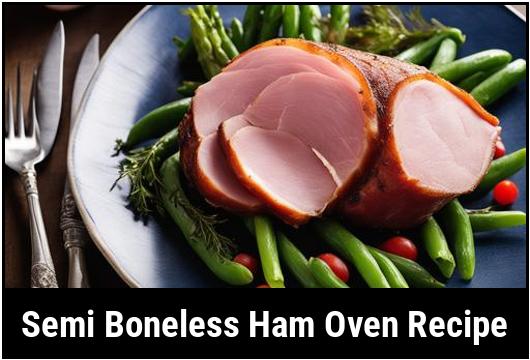
The Art Of Cooking A Semi-Boneless Ham: A Comprehensive Guide
Welcome to our comprehensive guide on cooking a delicious semi-boneless ham! Whether you’re a seasoned chef or a novice in the kitchen, this article will provide you with all the information and techniques you need to prepare a mouthwatering ham that your family and guests will rave about. From understanding the food science behind ham cooking to selecting, cleaning, and preparing the ham, we’ve got you covered. So let’s dive in and explore the world of semi-boneless ham together!
Understanding the Food Science behind Ham Cooking
To truly excel in the art of cooking a semi-boneless ham, it is important to understand the food science behind it. Ham is a cut of meat that comes from the hind leg or shoulder of a pig and is typically available in different forms, including bone-in and boneless. A semi-boneless ham, as the name suggests, is a ham with most of the bones removed but with a small portion left intact for flavor and aesthetics.
The process of cooking a ham involves a delicate balance between retaining moisture and achieving the desired level of tenderness. Hams contain a high amount of connective tissue, which, when cooked properly, breaks down into collagen, resulting in a juicy and tender texture. Understanding this science will help you make informed decisions throughout the cooking process.
Selecting the Perfect Semi-Boneless Ham
When it comes to selecting a semi-boneless ham, there are a few key criteria to consider.
1. Type of Ham: Hams can be uncured or cured and can come in various flavors, such as honey-glazed or smoked. Depending on your personal preference, choose a type that suits your taste buds.
2. Size and Weight: Consider the number of people you will be serving and select a ham accordingly. A general rule of thumb is to estimate about 1/2 pound of ham per person. Larger hams tend to have a richer flavor and can serve as the centerpiece for festive occasions.
3. Quality and Freshness: Look for hams with a firm texture, minimal visible fat, and a pleasant aroma. Avoid hams with an off-smell or slimy texture, as these may indicate spoilage.
4. Packaging: Hams are often available pre-packaged. Check for intact seals, undamaged packaging, and clear expiration or "best by" dates to ensure you’re getting a fresh and high-quality product.
Cleaning and Preparation
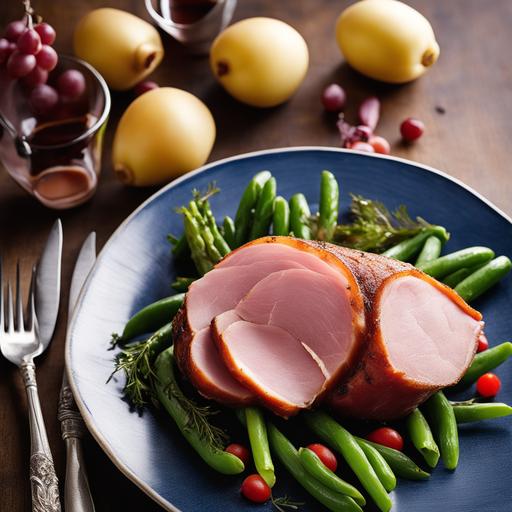
Once you’ve chosen your perfect semi-boneless ham, it’s time to prepare it for cooking. Follow these steps to clean and prepare your ham:
1. Unpackaging: Remove the ham from its packaging and place it on a clean surface. Discard any plastic wrapping or absorbent pads that may be included.
2. Inspection: Examine the ham for any visible bones or bone fragments that may have been missed during the processing. If you find any, carefully remove them using a pair of clean kitchen tweezers.
3. Rinsing: Rinse the ham under cool running water to remove any surface impurities. Pat it dry using paper towels.
4. Score the Skin: Using a sharp knife, score the skin in a crisscross pattern to help the flavor penetrate the meat and allow for a beautiful glaze to form.
Tips for Cooking the Perfect Semi-Boneless Ham
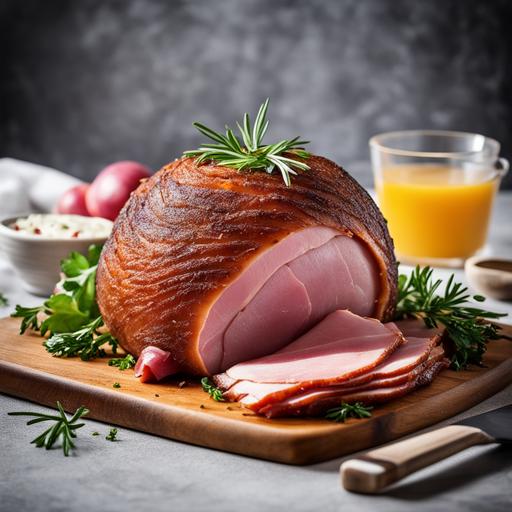
Now that your ham is ready, it’s time to move on to the cooking process. Follow these tips to ensure a flavorful and tender result:
1. Preheating the Oven: Preheat your oven to 325°F (160°C) to ensure even cooking.
2. Baking Method: Place the scored semi-boneless ham cut side down on a rack inside a roasting pan. The rack allows heat to circulate around the ham, resulting in an evenly cooked product.
3. Glazing Options: While a semi-boneless ham can be delicious on its own, glazing adds an extra layer of flavor and enhances visual appeal. There are countless glaze options available, ranging from classic brown sugar and honey to tangy mustard and pineapple-based glazes. Use maple syrup for a touch of sweetness or experiment with savory glazes incorporating dijon mustard or herbs. Apply the glaze generously over the surface of the ham, and periodically baste it throughout the cooking process for an extra burst of flavor.
4. Cooking Time and Temperature: The cooking time and internal temperature will vary depending on the size and type of ham you’re working with. As a general guideline, cook the ham for about 15-20 minutes per pound, or until the internal temperature reaches 145°F (63°C). It is crucial to use an instant-read meat thermometer to ensure the ham is fully cooked and safe to eat. Insert the thermometer into the thickest part of the ham, making sure not to touch the bone.
5. Resting the Ham: Once the ham reaches the desired temperature, carefully remove it from the oven. Allow it to rest for at least 15-20 minutes before carving. This resting period allows the juices to redistribute within the meat, resulting in a succulent and moist ham.
Doneness Checks and Variations
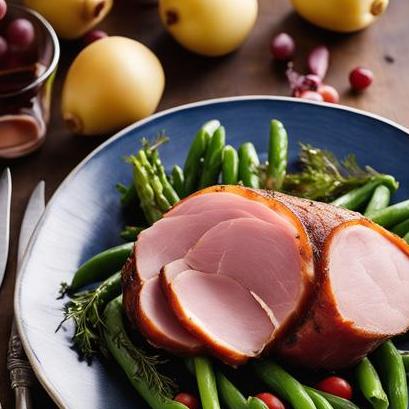
To ensure your semi-boneless ham is cooked to perfection, here are some doneness checks and variations to consider:
1. Visual Check: A properly cooked ham should have a golden brown glaze, slightly crispy skin, and a shiny appearance. Use your senses to assess its doneness visually.
2. Internal Temperature: As mentioned earlier, the internal temperature should read 145°F (63°C) when measured at the thickest part of the ham.
3. Texture Test: Using a sharp knife, make a small cut near the bone. The meat should be juicy, tender, and have an even pink color throughout.
4. Flavor Variations: To add a personal touch, experiment with different spices, herbs, and glazes. Consider incorporating flavors such as cloves, garlic, rosemary, or even a hint of bourbon.
5. Serving Suggestions: Semi-boneless ham pairs well with a variety of sides, such as scalloped potatoes, roasted vegetables, or a fresh green salad. Don’t forget to serve it with your favorite mustard, chutney, or cranberry sauce for an extra touch of flavor.
Dealing with Overcooked or Undercooked Ham
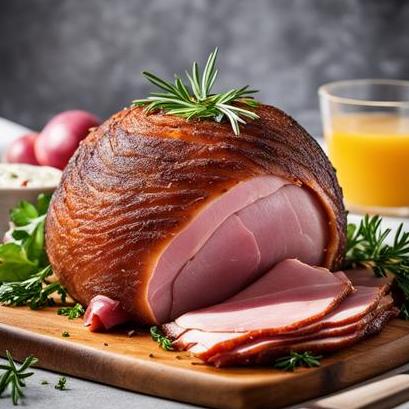
Despite our best efforts, sometimes things don’t go according to plan. If you find yourself with an overcooked or undercooked semi-boneless ham, here’s what you can do:
1. Overcooked Ham: If your ham turns out drier than desired, you can salvage it by slicing it thinly and serving it with a flavorful sauce or gravy. Simmer the ham slices in a bit of broth or glaze to rehydrate them slightly.
2. Undercooked Ham: In case your ham is not fully cooked, you can return it to the oven at a low temperature (around 250°F or 120°C) and continue cooking until the desired internal temperature is reached.
Remember, practice makes perfect! Each cooking experience contributes to your knowledge and skills, allowing you to hone your technique and achieve the desired results every time.
Conclusion
Congratulations! You’ve successfully traversed the world of semi-boneless ham cooking. Armed with a solid understanding of the food science, selection process, cleaning, preparation, essential tips, and doneness checks, you are now ready to embark on your culinary journey. So go ahead, select that perfect semi-boneless ham, take your time to clean and prepare it, experiment with different glazes and flavors, and master the art of cooking a tender and full-flavored ham. Bon appétit!
Sources
FAQS On Semi Boneless Ham Oven Recipe
What Is A Semi-boneless Ham?
A semi-boneless ham refers to a ham that has had most of its bone removed to make slicing and serving easier. However, a small portion of bone, typically the hock or shank, is intentionally left intact to enhance flavor during cooking.
What Are The Benefits Of Cooking A Semi-boneless Ham In The Oven?
Cooking a semi-boneless ham in the oven allows for optimal heat distribution and ensures that the meat is cooked evenly. Moreover, roasting in the oven enhances the flavors and results in a delicious caramelized exterior.
How Do I Prepare A Semi-boneless Ham For Cooking In The Oven?
To prepare a semi-boneless ham, it is advisable to let it sit at room temperature for about 1-2 hours. This allows the meat to reach even temperature throughout and promotes even cooking. Additionally, you may choose to score the fat surface of the ham in a diamond pattern to enhance visual appeal and allow flavors to penetrate the meat more effectively.
What Is The Recommended Oven Temperature And Cooking Time For A Semi-boneless Ham?
Preheat your oven to 325°F (163°C). For an average-sized semi-boneless ham, cook for approximately 18-20 minutes per pound. It is essential to use a meat thermometer to ensure the internal temperature of the ham reaches a safe minimum of 145°F (63°C). Cooking times may vary, so it is always best to rely on a thermometer for accuracy.
Are There Any Specific Glazes Or Seasonings That Work Well With A Semi-boneless Ham?
There are numerous glazes and seasonings options that pair exceptionally well with a semi-boneless ham. Some popular choices include a maple glaze, brown sugar and mustard glaze, honey and pineapple glaze, or even a classic clove-studded glaze. These flavors complement the natural sweetness of the ham and give it a delightful caramelized exterior. Remember to baste the ham with the chosen glaze periodically during cooking to add extra flavor and moisture.


